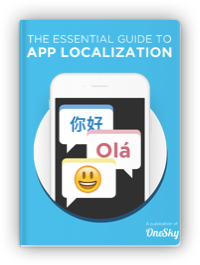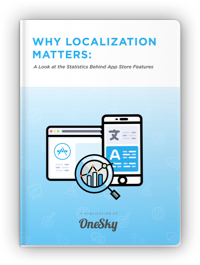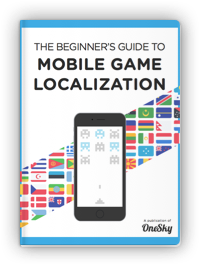Localization Process: What It is and How It Optimizes Your Global Strategy
Going global is no longer optional—it’s essential.
Consumers worldwide expect products and content tailored to their language and culture.
But effective localization isn’t just about translation; it’s a strategic process that boosts engagement, trust, and revenue.
Launching in new markets without proper localization risks confusion, offense, and missed opportunities.
Conversely, businesses that master a systematic, tech-driven localization process see a huge increase in market share and trust, such that 76% of consumers prefer buying in their native language.
The key is a well-crafted localization process—combining planning, technology, and ongoing refinement—that gives you speed, quality, and cultural authenticity.
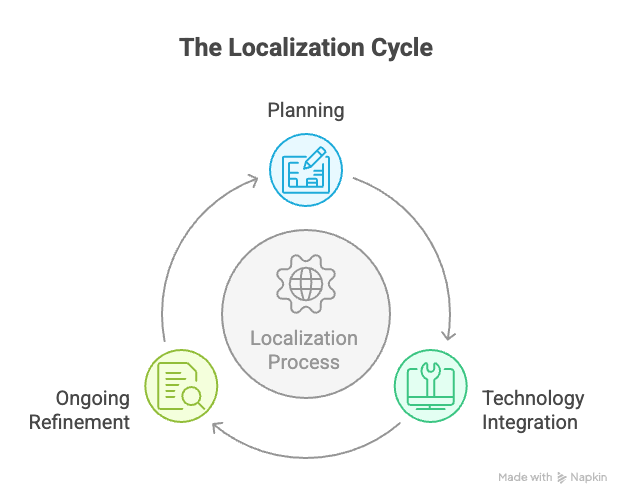
- Demystifying the Localization Process – The Foundation of Global Success
- The Step-by-Step Journey of Localization
- Emerging Technologies & Modern Strategies in Localization
- Addressing Key Challenges – How Modern Solutions Overcome the Barriers
- A Deep Dive into OneSky – Revolutionizing Localization with Cutting-Edge Tech
- The Strategic Importance of Localization – Beyond Just Translation
- Achieving Global Excellence – Best Practices & Recommendations
- Ready to Unlock Your Global Potential? Partner with OneSky Today
Demystifying the Localization Process — The Foundation of Global Success
Localization (L10n) is a comprehensive, multi-disciplinary process.
It’s more than translating words; it’s about adapting your entire user experience—visuals, language, layout, legal compliance, and cultural relevance—that makes target users feel “at home.”
What Is the Localization Process?
At its core, the localization process involves adapting your content or product to a specific target market—respecting language, culture, regulations, and user expectations.
It comprises a series of interconnected steps designed to guarantee quality, consistency, and speed.

Why Invest Heavily in the Localization Workflow?
Statistics speak volumes:
- 75% of consumers prefer buying from websites in their native language.
- 65% prefer content in their language, even if it’s poor quality.
- 40% will not buy from websites in other languages.
However, poorly executed localization can lead to embarrassment, legal issues, or brand damage.
For example, Pepsi famously launched “Come Alive with Pepsi” in China, which translated humorously as “Pepsi brings your ancestors back from the dead.”
Lesson learned: Culturally nuanced localization is crucial.
The Core of a Successful Localization Workflow
Effective localization relies on an end-to-end process that combines strategic planning, precise execution, rigorous quality checks, and continuous improvement.
Let’s explore each phase in detail, alongside best practices, pitfalls, and how modern technology supports seamless execution.

The Step-by-Step Journey of Localization
1. Planning & Preparation: The Bedrock of Success
Every high-performing project begins with clear goals and a structured plan.
Key Activities:
- Define clear objectives: Are you trying to increase conversion, improve brand recognition, or meet legal requirements? Clarity here shapes scope and resource allocation.
- Identify your target markets: Use market research, demographic data, and cultural insights to prioritize regions and languages.
- Assemble a cross-functional team:
The ideal team:
| Role | Responsibility | Key Skills Needed |
|---|---|---|
| Project Manager | Oversee workflow | Organization, communication |
| Translators | Create initial content | Native language fluency, industry expertise |
| Cultural Consultants | Cultural adaptation | Deep understanding of local customs |
| QA Specialists | Final quality check | Attention to detail, technical skills |
- Choose appropriate tools: A high-quality Translation Management System (TMS), QA platforms, glossaries, and API integrations are foundational.
- Inventory your content: Conduct an exhaustive content audit—UI strings, marketing assets, legal documents, multimedia—to facilitate organized, consistent work. Proper asset management reduces last-minute surprises.
Key Insight:
Proper groundwork ensures your team can work with clarity and agility.
Our Insider Tips:
Consider implementing automation tools that can extract source content from your digital assets, such as APIs, content management systems, or specialized extraction scripts.
These tools minimize manual effort and prevent oversight.
Read also: Best Agentic AI Tools: Real-Life Examples & Top Framework
2. Content Collection & Organization: Structuring Source Data for Success
Once planning is complete, the focus shifts to gathering and organizing content—the foundational backbone of your localization pipeline.
Why is this step critical?
Inconsistent, disorganized source content causes costly delays and quality issues downstream.
Activities Include:
- Creating comprehensive content inventories that include all relevant assets:
- Website UI strings, buttons, menus
- User manuals and help docs
- Marketing copy and social media content
- Multimedia assets (images, videos, voiceovers)
- Legal notices, privacy policies
- Using content categorization—grouping assets by type, priority, target language, or department—to facilitate batch processing and targeted QA.
- Automating content extraction: Modern tools like content extractors or AI-based parsers can automatically identify translatable units in complex file formats (JSON, XML, InDesign, markdown, etc.).
Our Insider Tips:
Utilize a centralized content repository linked to your TMS for real-time flow and updates, reducing version issues and misalignments.
3. Translation & Cultural Adaptation: The Heart of Localization
This phase blends linguistic precision with cultural relevance—a challenging, yet rewarding, component.
How to achieve this effectively?
- Human Translators & Reviewers: Native speakers with domain expertise ensure nuance, idiom, and tone are captured.
- Artificial Intelligence & Automation: Neural Machine Translation (NMT) can swiftly produce draft translations, which human experts then refine—speeding delivery by up to 50% with maintained quality.
- Translation Memories & Glossaries: These repositories ensure consistent use of terminology, brand tone, and style—saving time across multiple projects.
| Element | Benefit | Best Practice |
|---|---|---|
| Translation Memory | Consistency & speed | Reuse translations; update regularly |
| Glossaries | Terminology accuracy | Curate and enforce key term standards |
| Contextual Data | Reduces ambiguity | Attach screenshots, usage examples |
Cultural nuances:
Localization must consider idioms, humor, taboos, symbols, and imagery that resonate authentically.
Practical Approach:
Engage local cultural consultants for validation.
Run focus groups or in-market testing to flag problematic content before launch.
With the rise of agentic AI, efficiency is further improved due to the use of agentic localization softwares like OLA…..
4. Quality Assurance & Testing: Zero Defects Before Launch
Quality assurance (QA) must be rigorous and multifaceted.
Types of QA Checks:
- Linguistic QA: Verifies accuracy, terminology, tone, and style.
- Technical QA: Checks UI layout, functionality, and embedded content.
- Cultural QA: Validates cultural appropriateness, symbols, colors, and imagery.
Automated QA tools swiftly identify:
- Broken layout elements caused by text expansion
- Missing or inconsistent placeholders
- Term inconsistencies or mistranslations
- Broken links or images
In-Context Testing:
Embedding translations directly into the product (via visual overlays or simulated environments) reveals layout and functionality issues that plain text reviews might miss.
Feedback Loops
Gather feedback from local teams, beta testers, or early adopters.
Check in regularly to identify subtle cultural mismatches or technical issues—ongoing tasks that keep your localization fresh and relevant.
5. Delivery & Deployment: From Final Content to Customer Hands
The deployment phase involves translating, formatting, and integrating content into your live platform.
- Content Formatting:Adjust layouts for language-specific traits—e.g., text expansion in German or right-to-left scripts in Arabic/Hebrew.
- Automation & Integration: Use APIs or plug-ins to sync translations directly with your CMS, app build system, or eCommerce platform, minimizing manual effort.
- Phased Rollouts: Launch in stages (beta, pilot, full rollout) to verify stability and receive user feedback.
Best Practice:
Employ feature toggles—controlled switches for localized features—to switch on new content gradually, allowing quick rollback if issues crop up.
6. Post-Deployment Monitoring & Continuous Optimization
Localization as an ongoing journey requires vigilant monitoring, analysis, and refinement to keep content relevant, accurate, and engaging.
Ways to Maintain and Improve Localization Post-Launch:
- Track User Engagement Metrics: Use analytics tools to measure bounce rates, session durations, conversion rates, and other KPIs. A dip in engagement may suggest cultural or linguistic misalignments.
- Collect Customer Feedback: Implement in-app surveys, social media listening, and direct communications. Users’ direct comments often highlight nuanced cultural issues that need attention.
- Collaborate with Local Teams: Establish channels for continuous feedback from regional offices, support staff, and community managers who understand audience preferences firsthand.
- Update Content Regularly: As markets evolve—whether through new features, products, or shifting cultural trends—your content must evolve too. Routine content audits coupled with agile workflows enable rapid updates.
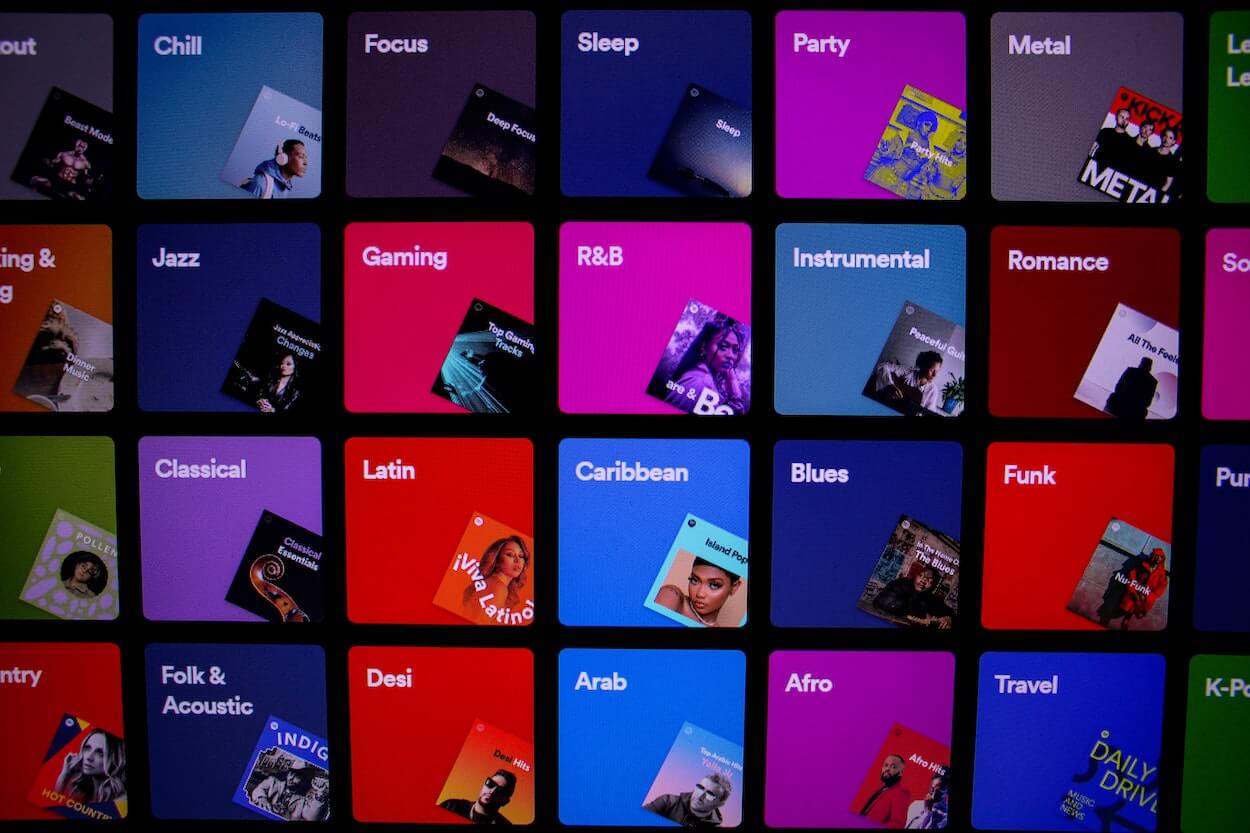
Real-World Success: How Spotify Accelerated Global Growth Through Strategic Localization
Imagine launching a product in markets across the world—yet, some users feel it’s “not quite right.” Music app Spotify faced this challenge head-on as it expanded into over 180 countries.
Recognizing that music is deeply cultural—and that language shapes experience—Spotify made localization a top priority.
Their secret? A smart, systematic approach that combined cutting-edge technology with cultural insight.
Here’s what Spotify did:
1. Culturally Tailored Content
They worked with native experts to adapt playlists, song titles, and app interfaces.
For example, playlists with titles like “Party Hits” were renamed to better resonate or had cultural tweaks to match local tastes.
2. Speed & Efficiency via Automation
Spotify adopted powerful translation tools integrated into their development process.
This meant content—be it song descriptions or UI labels—could be extracted, translated, and pushed live almost instantly, even for dozens of languages.
3. Consistency is Key
Using translation memories and glossaries—think of them as a shared language bible—they ensured that brand terms and genre names stayed uniform everywhere, boosting clarity and trust.
4. See Before You Launch
They used in-context previews, allowing developers and translators to view how new language versions appeared within the actual app.
No surprises—only polished, culturally aligned content.
5. Ongoing Refinement
Post-launch, they actively listened to user feedback, engagement stats, and support inquiries.
This data helped them continuously refine translations, making the experience even better for local users.
The Impact?
- Faster rollouts: Localized updates for new features could go live 50% faster.
- More Engagement: In markets where localization was a focus, user engagement shot up by 25%.
- Stronger Loyalty: Users felt Spotify truly understood their music culture, boosting retention.
- Soaring Revenue: Markets with strong localization efforts saw double-digit growth year-over-year.
Spotify’s success shows that effective localization—rooted in cultural insight, supported by automation and continuous improvement—is a game-changer.
It’s a roadmap for any company looking to turn global expansion into a sustainable, customer-centric growth engine.
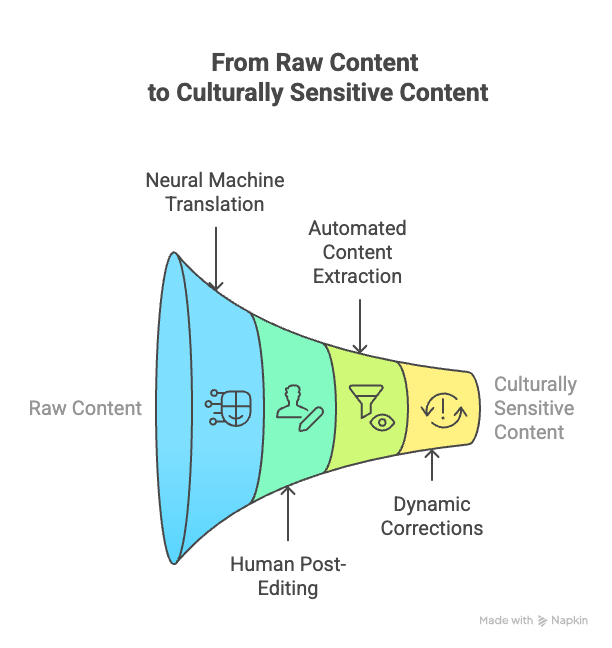
Emerging Technologies & Modern Strategies in Localization
The evolution of technology is reshaping how organizations approach localization—making it faster, smarter, and more cost-effective.
The Power of AI & Automation
1. Neural Machine Translation (NMT)
Leveraging deep learning, NMT models produce fluid, context-aware translations.
When combined with human post-editing, they cut costs and time by 50-70%.
2. Automated Content Extraction & Generation
AI tools can scan entire websites, apps, or documentation to extract translatable units automatically, reducing manual effort by up to 80%.
3. Dynamic Translation Corrections
Real-time AI adjustments based on user feedback or behavioral data ensure content stays relevant and culturally sensitive.
Advanced Localization Techniques
| Technique | Description | Benefits |
|---|---|---|
| In-Context Localization | Visual environment tools enable translators and developers to see how text appears in situ. | Reduced layout errors; faster validation cycles. |
| Contextual AI Recommendations | AI suggests cultural adaptations, idiom replacements, or images based on market data. | Higher engagement; minimized cultural faux pas. |
| Voice & Video Localization | Automated subtitling, dubbing, and voice-over synchronization. | Broader media engagement; scalable multilingual content. |
| Real-Time Localization | Continuous updates driven by data streams and user insights. | Keeps content fresh and culturally relevant. |
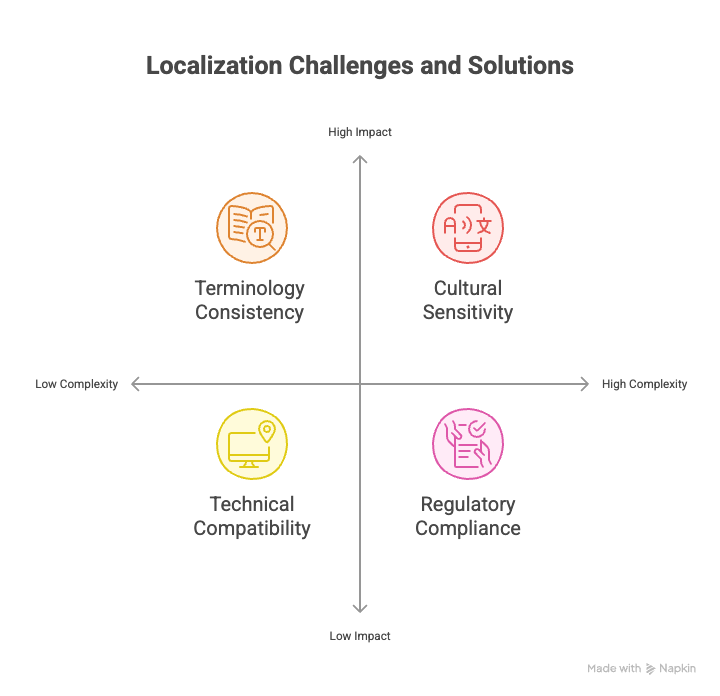
Addressing Key Challenges — How Modern Solutions Overcome the Barriers
Despite technological advances, common pitfalls threaten to undermine your localization initiatives.
Here’s how smart strategies and tools can address these challenges:
Challenge 1: Cultural & Linguistic Sensitivity
Solution:
- Engage native speakers and cultural consultants at every stage.
- Use AI models trained on local dialects and idioms.
- Conduct user testing or focus groups for cultural validation.
Challenge 2: Managing Multiple Languages & Long-Format Content
Solution:
- Use robust TMS with multi-language support & version control.
- Automate content synchronization via APIs.
- Support flexible UI design that adapts dynamically.
Challenge 3: Maintaining Terminology & Style Consistency
Solution:
- Curate comprehensive glossaries regularly updated with current terminology.
- Use translation memories that learn from ongoing projects.
- Enforce style guides with automated style application and validation.
Challenge 4: Technical & Functionality Compatibility
Solution:
- Incorporate in-context visual localization tools, enabling live preview of translations.
- Automate layout validation across languages.
- Prioritize testing—both automated and manual—in early deployment stages.
Challenge 5: Handling Regulatory and Compliance Barriers
Solution:
- Stay updated on international laws and regulations affecting content localization.
- Integrate compliance checks within the localization workflow to ensure legal and regulatory adherence.
- Engage legal consultants in target regions to verify that content meets all necessary standards and requirements.
A Deep Dive into OneSky — Revolutionizing Localization with Cutting-Edge Tech
So, how can your organization adopt this vision of smart, scalable, and quality-focused localization?
The answer is OneSky’s advanced platform, designed to address every stage of the localization pipeline with depth, precision, and agility.
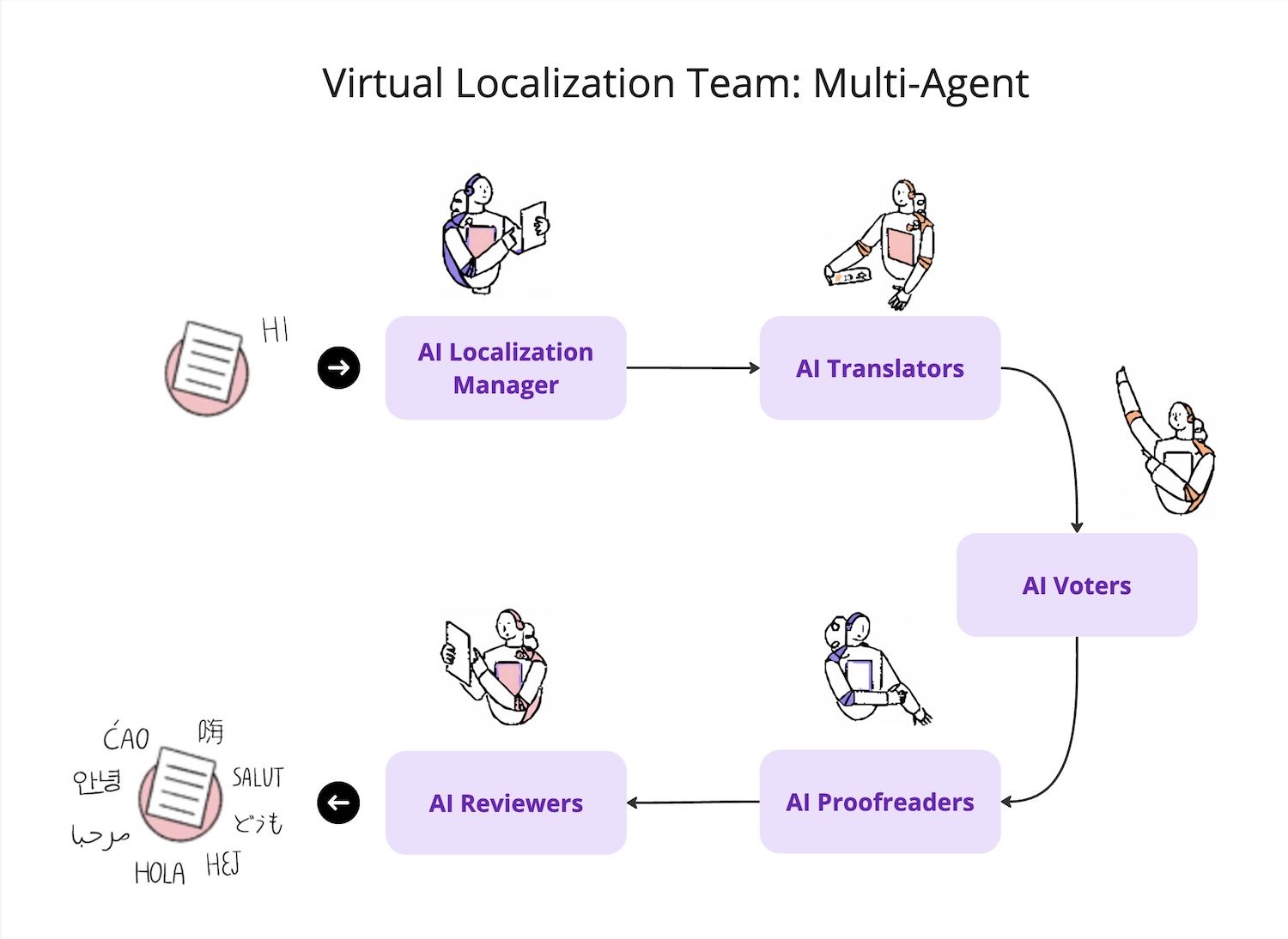
Why Is OneSky Different?
1. Flexible & Scalable
Supports everything from small apps to enterprise platforms across 10+ or 100+ languages.
Built for growth, it handles billions of segments efficiently without sacrificing performance.
2. AI-Driven Architecture
Our proprietary neural translation models are trained on industry-specific data, delivering hyper-contextual, brand-aligned translations.
The AI continually learns and improves over time.
3. Visual & Contextual Tools
See your translations within your product using live previews, screenshots, and video overlays.
This reduces UI errors and streamlines workflow between translators and developers.
4. Automated QA & Validation
Automatically detects layout issues, missing placeholders, broken links, and inconsistencies—cutting review cycles by nearly 50%.
5. Content Integration & Automation
APIs enable real-time sync of updates—UI strings, articles, multimedia—making continuous localization seamless and efficient.
Core Features of OneSky Platform in Depth
1. Universal Compatibility & Multi-Format Support
Supports all content formats, including:
- Software strings (JSON, XML, YAML, PO)
- Web content (HTML, Markdown)
- Mobile app assets (iOS .strings, Android XML)
- Multimedia content (subtitles, voice-overs)
- Documentation (PDF, Word, InDesign)
The platform’s flexible import/export engine ensures your developers and content teams work from a consistent, unified environment.
2. Intelligent Machine Translation & Human-in-the-Loop
Our advanced neural MT models:
- Provide initial drafts within seconds.
- Are custom-trained on your terminology, style, and domain-specific data, increasing relevance.
- Include auto post-editing suggestions that your professional translators can accept, modify, or reject, accelerating review cycles.
This hybrid approach yields native-like translations with drastically reduced turnaround times.
3. Visual & In-Context Localization
A powerful feature, this allows teams to:
- Preview in product environment: See how translated strings fit within actual UI mockups.
- In-place editing: Modify translations directly in context, ensuring layout integrity.
- Automated layout validation: Detect truncations, overlaps, or missing UI elements before deployment.
This eliminates costly rework caused by layout inconsistencies, saving weeks in project timelines.
4. Advanced QA & Validation
Our QA modules automatically:
- Detect placeholder and formatting mismatches
- Find broken links, images, or icons
- Verify layout compliance across multiple languages
- Validate terminology consistency against your glossaries
- Check text expansion/contraction issues
Comprehensive QA reduces errors and enhances user trust and satisfaction.
5. Seamless Integration & Automation
- API Connectivity:Export and import content directly between your CMS, source code repositories, and deployment pipelines.
- Workflow Automation: Set triggers for content updates, translation requests, QA checks, and deployment tasks—all automated without manual intervention.
- Version Control & Rollback:Track all updates and revert to previous versions instantly if needed.
This level of automation enables continuous localization, keeping your content fresh without increasing overhead.
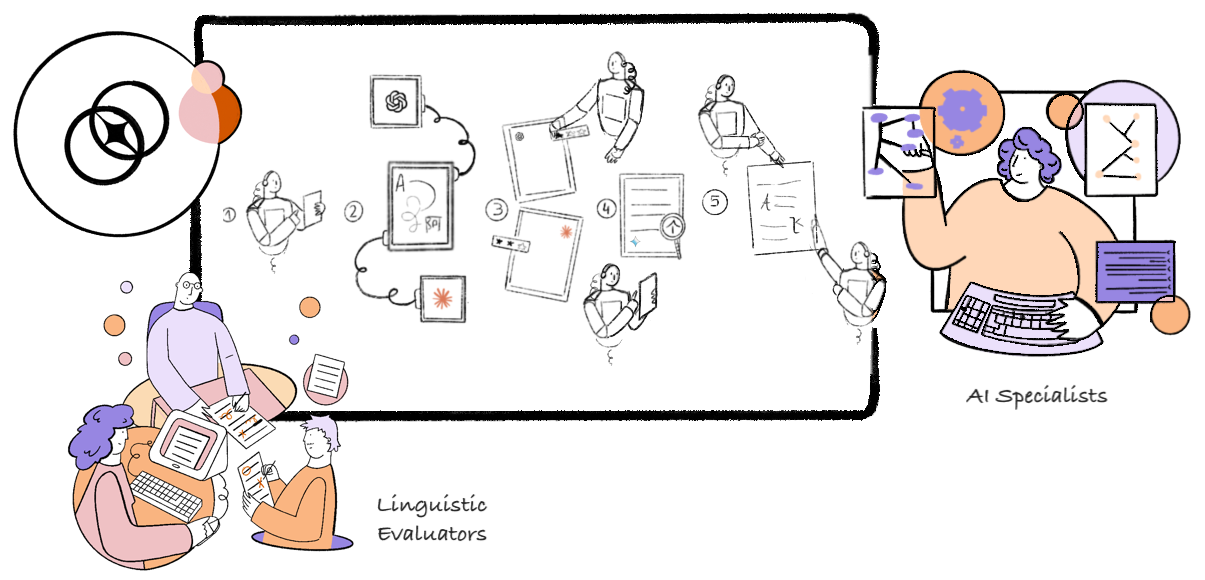
Case Study: Transforming a Global Software Company with OneSky
Client Profile:
An enterprise SaaS provider seeking to support 50+ languages, with over 10 million users worldwide.
Challenge:
Keep up with rapid product releases, maintain consistency, and ensure UI integrity across vast language sets.
Client’s Achievements:
- Speed:Reduced localization turnaround from weeks to days—accelerating product release cycles by 40%.
- Consistency: Achieved near-perfect terminology and style adherence across all languages, boosting brand integrity.
- Quality: Minimized layout and UI errors by up to 50%, leading to higher user satisfaction.
- Cost-Effectiveness: Cut localization costs by approximately 35% through automation and AI-enhanced workflows.
- Customer Satisfaction:Received positive feedback in multilingual surveys, with a 30% increase in user engagement metrics post-implementation.
This success story exemplifies how leveraging OneSky’s intelligent platform empowers global organizations to operate swiftly, maintain quality, and scale seamlessly.
Read also: Understanding Software Localization: A Comprehensive Guide
The Strategic Importance of Localization – Beyond Just Translation
Localization as a Market Differentiator
In a competitive landscape, localization isn’t just a technical necessity; it’s a strategic differentiator.
Companies that deeply invest in understanding and embedding local cultures into their content build trust and loyalty.
Market-specific nuances—local idioms, cultural symbols, consumer behavior—can make or break your brand.
For example, a marketing campaign that resonates perfectly in Japan might fall flat in Brazil unless tailored appropriately.
The role of continuous localization
- Dynamic markets: Audience preferences shift, regulations evolve, and cultural trends change.
- Product evolution: Features, UI, and content updates require ongoing localization.
- Reputation management: Staying relevant and culturally sensitive fosters loyalty and reduces backlash.
Incorporating Automation & AI enables ongoing, scalable localization—keeping content fresh, accurate, and aligned with real-time market needs.
Read also: AI Localization: Mastering Global Reach with Best Practices
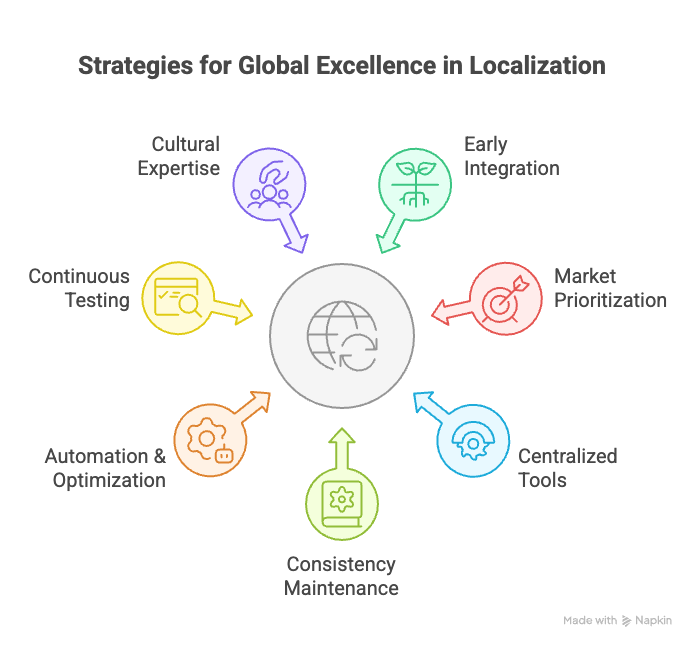
Achieving Global Excellence — Best Practices & Recommendations
To maximize your localization efforts, follow these strategic best practices:
1. Start Early & Integrate Localization in Development
- Incorporate internationalization (i18n) during product design—support multiple character sets, flexible layouts, and adaptable UI components.
- Establish localization workflows during product planning—avoid costly redesigns later.
2. Prioritize Markets & Content Types
- Use data-driven insights to identify high-value target markets.
- Focus on critical content first—UI, legal notices, core products—and expand gradually.
3. Use Centralized, Collaborative Tools
- Employ a single platform—preferably with automation, AI, and visual tools—to manage all assets.
- Enable real-time collaboration, feedback, and version control.
4. Maintain Consistency with Glossaries & TM
- Build and update terminology glossaries tailored to your industry and brand.
- Leverage translation memories for consistency and efficiency.
5. Automate & Optimize
- Automate repetitive tasks—extraction, QA, content sync—using AI-driven workflows.
- Integrate translation and QA tools with your development pipelines to support continuous delivery.
6. Continuous Testing & Feedback
- Conduct in-market testing, A/B testing, and user surveys.
- Regularly review content and update based on analytics and feedback.
7. Invest in Cultural Expertise
- Engage native speakers and cultural consultants from each target market.
- Periodically update your cultural knowledge base to keep content fresh.

Ready to Unlock Your Global Potential? Partner with OneSky Today
Localization is the cornerstone of worldwide success.
It’s more than just translating words—it’s about creating authentic, culturally resonant experiences that foster trust, loyalty, and growth in every market you serve.
Imagine deploying your product seamlessly across dozens of languages—powered by AI, optimized by automation, and perfected by human expertise.
That future is now within reach.
With OneSky’s advanced AI-powered localization platform, you gain:
- Rapid speed—cut your time-to-market by up to 50%
- Consistent, brand-aligned translations—capturing your voice across all channels
- Full automation—streamlined workflows, real-time content synchronization, and error-free deployments
- Visual and contextual tools—ensuring UI/UIX fidelity and layout correctness in every language
Take the first step toward global excellence.
Start your trial for free or connect with our experts today.
Let us show you how OneSky can transform your localization approach, empower your team, and accelerate your journey to international success.
Your global expansion begins here. Reach us now to experience the future of localization!

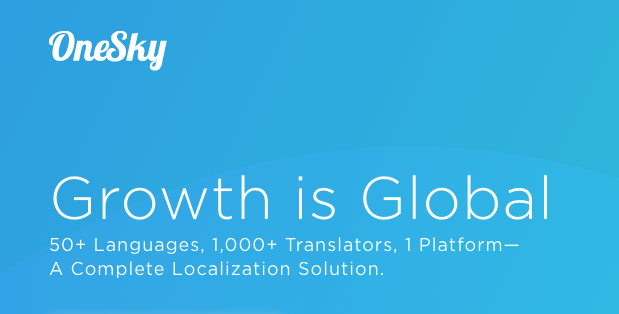

 Written by -
Written by - 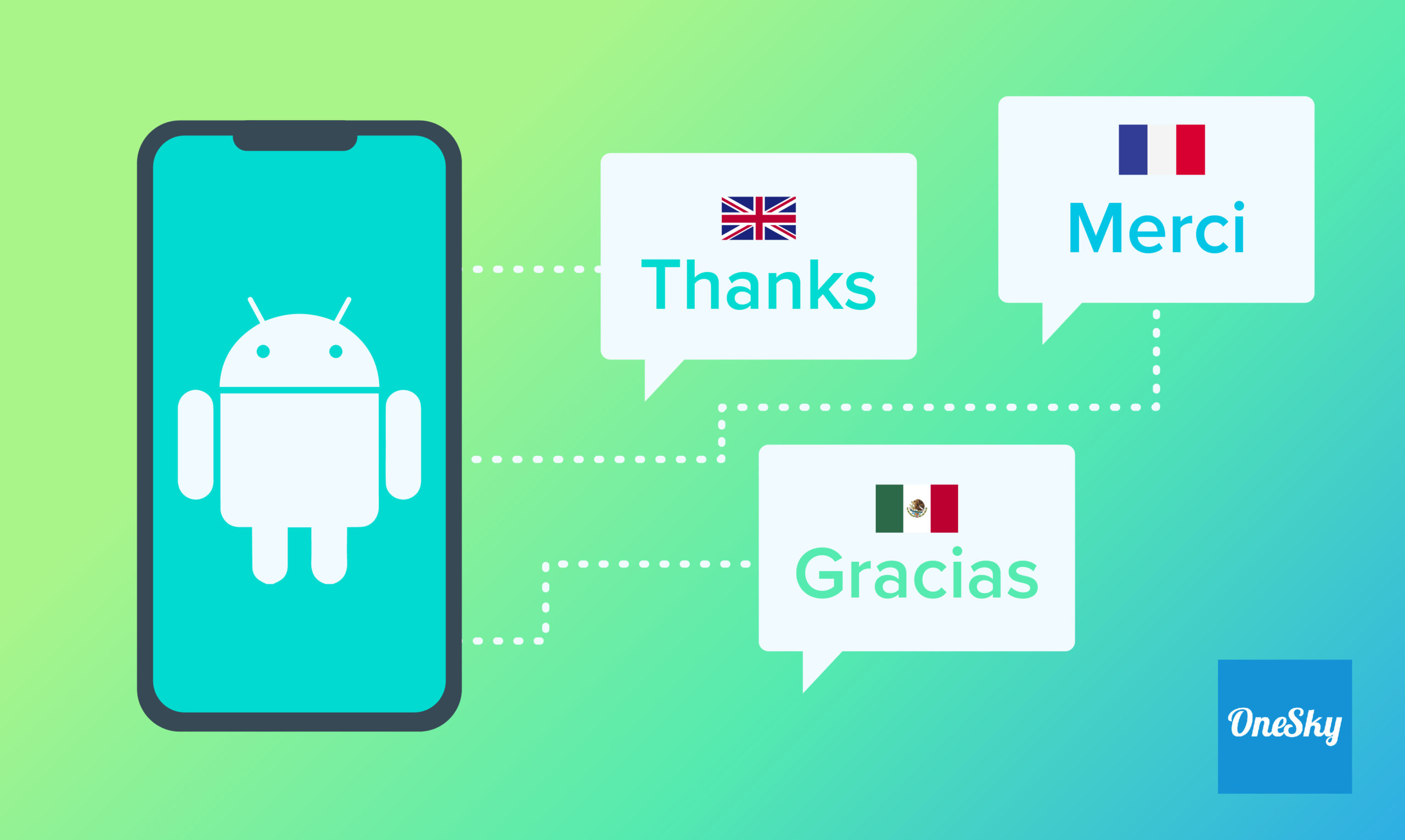
 Written by
Written by 

 Written by
Written by 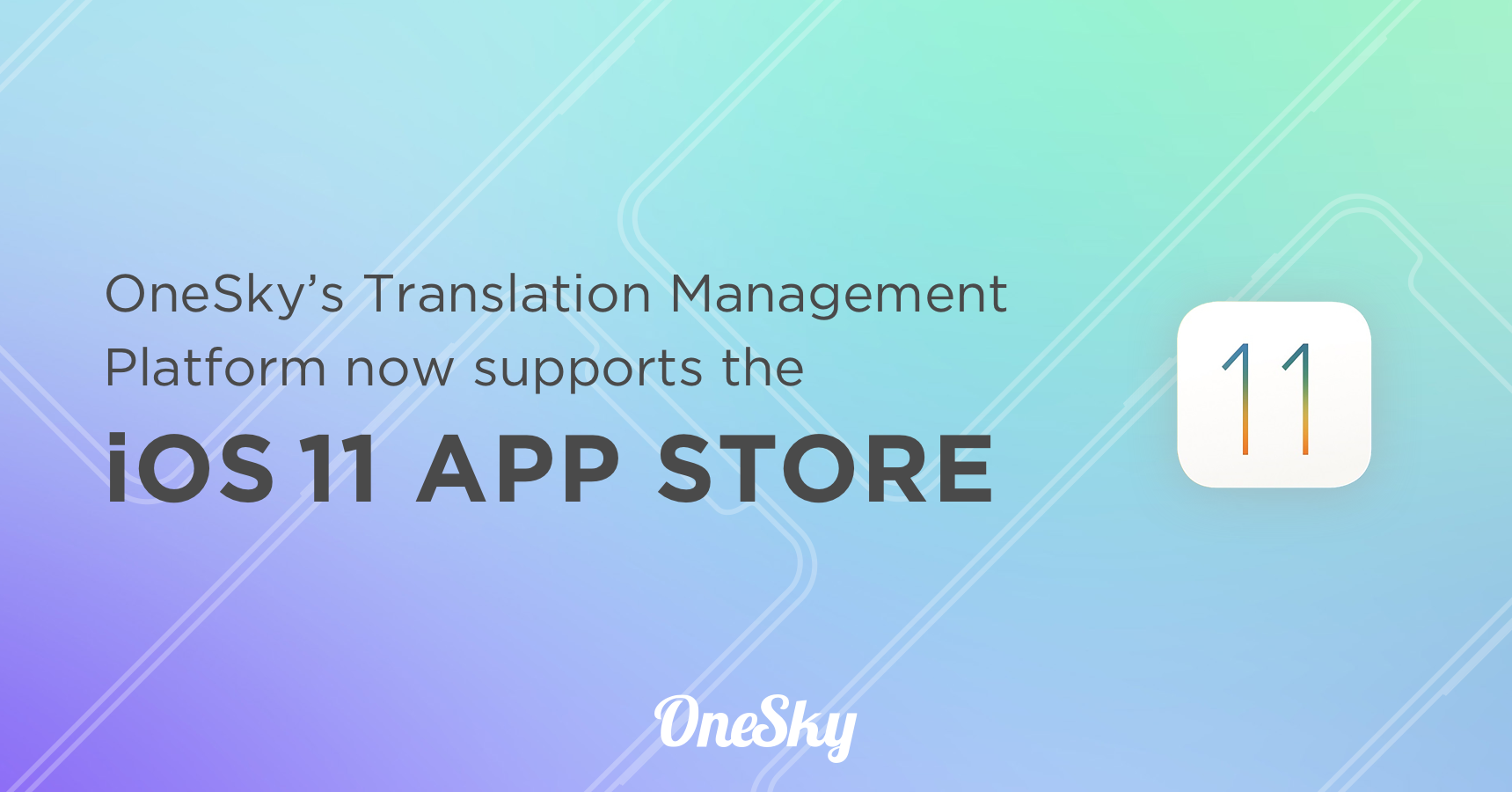
 Written by
Written by 
